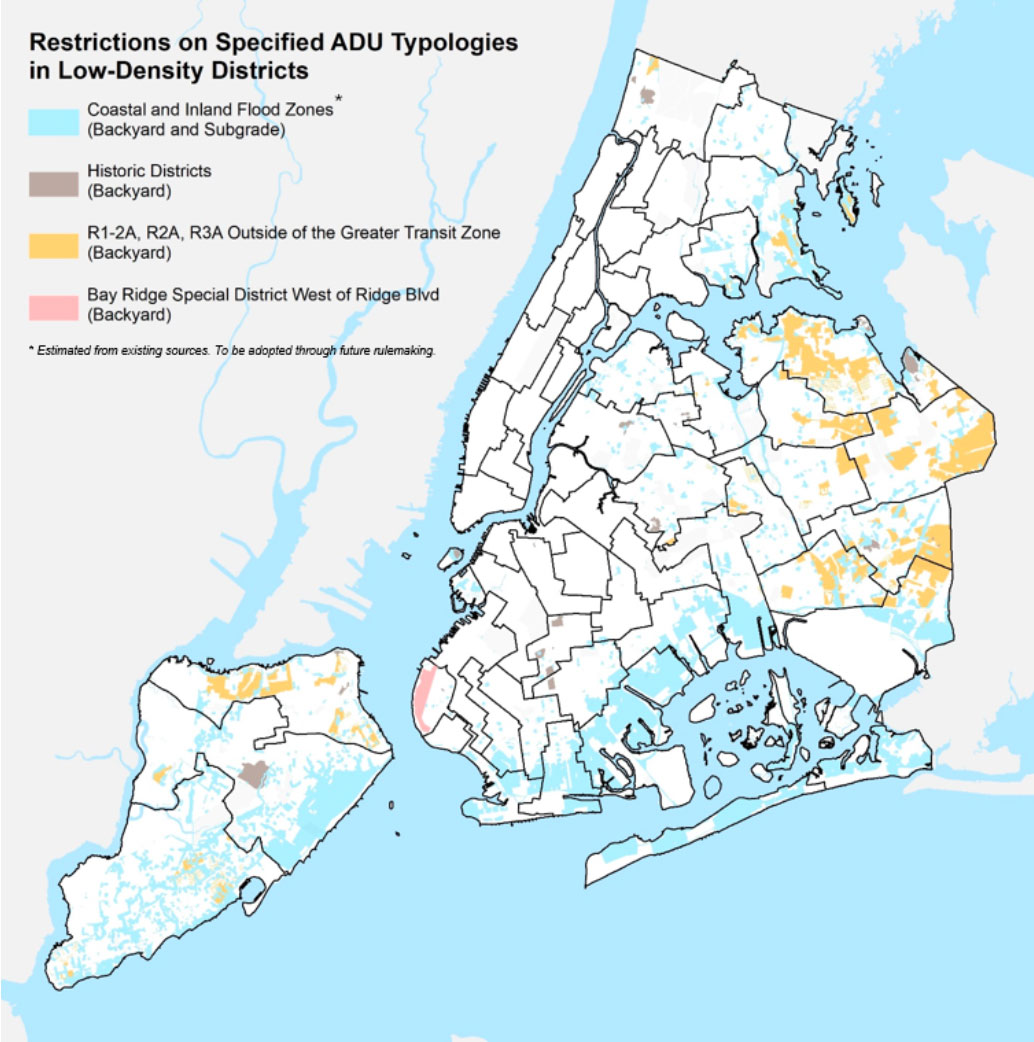Bay Ridge mothers-in-law, you’re out of luck.
Council Member Justin Brannan voted for it, but he scored a “special” carveout in the landmark City of Yes zoning package that passed the City Council on Dec. 5. In a large swath of Bay Ridge, “in-law apartments,” known in zoning parlance as accessory dwelling units or ADUs, are not allowed in backyards, despite being approved in much of the rest of the city.
The mini units are also banned in lower density regions in other parts of the city with high flooding risk, historic districts or areas that are far from transit. But neither flooding, historic district status nor transit access is an issue in the “Bay Ridge Special District,” according to the council’s City of Yes modifications. The special district, established in 1978, aims to preserve the character of the neighborhood by limiting building heights and density. It extends west of Ridge Boulevard and southwest of Marine Avenue. None of the city’s dozens of other special districts appear to have been used for the purpose of restricting ADUs in the City of Yes plan.

Credit: NYC Department of City Planning
“It's well known that Justin's an ally of (City Council Speaker Adrienne Adams), so wouldn't plan to vote against her on such an important vote, but clearly, Bay Ridge had issues with the plan, so he needed to make sure in the background he was addressing those issues,” a fellow City Council member told City & State. “He's close to the speaker and a really good inside player, so he understands how to move the levers inside the council to get what he wants rather than being a vocal opponent of the plan.”
The City of Yes zoning proposal, introduced by the mayor’s administration to encourage more housing development in every neighborhood in the city, was unpopular in much of the outer boroughs, including in Brannan’s district. Brannan’s Democratic chief of staff Chris McCreight went so far as to explicitly campaign against City of Yes in his quest to win an overlapping Assembly seat. (It didn’t work. McCreight lost to Republican Alec Brook-Krasny in November.)
"Councilman Brannan was the only member in southern Brooklyn – and one of only a few members representing an outer borough low density district – to vote in support of the bold City For All plan,” a spokesperson for Brannan said in an emailed statement, referencing the council’s affordable housing funding package passed together with City of Yes. “Councilman Brannan listens to his constituents, leads, and delivers what's best for his community and for the city. That's his job."
A council spokesperson said Brannan, the City Council’s influential Finance Committee chair, was “pivotal” in passing City of Yes and securing $5 billion to support affordable housing. Himself a resident of the “Bay Ridge Special District,” according to voter registration records, the Brooklyn Democrat is term-limited at the end of 2025. He is seeking higher office as New York City comptroller, and one of his opponents, Manhattan Borough President Mark Levine, has made housing a centerpiece of his campaign.
Housing advocates have been pushing the idea that every area of the city should be considered for new housing. “For too long, hyper-local political considerations, all-too-often reflecting the interests of the most securely housed and well-connected residents in the city, have taken precedence over the broader housing needs of New Yorkers,” chided Annemarie Gray, executive director of YIMBY advocacy group Open New York, in a statement to City & State.
Community Board 10 District Manager Josephine Beckmann said Brannan’s constituents are concerned about stormwater infrastructure. Much of the Coney Island side of Brannan’s district is indeed carved out because it’s in the coastal flooding zone. Beckman noted that while the “Bay Ridge Special District” is not an area that appears at risk of flooding according to the Department of City Planning coastal flood hazard map, there are indications on the stormwater-focused flood maps that the area could flood under “Extreme Flood” conditions with “2080 Sea Level Rise.” Of course, much of the rest of the city is in the same (eventually literal) boat. The Bay Ridge carveout does not apply to basement units – which would be most flood-prone.
“Our neighbors were pretty vocal, and we had a large public hearing. We had hundreds of people attend. We had hundreds of emails,” Beckmann said. “And we do have an effective council member and appreciate his responses.”

NEXT STORY: Here are the major bills awaiting Gov. Kathy Hochul’s signature


